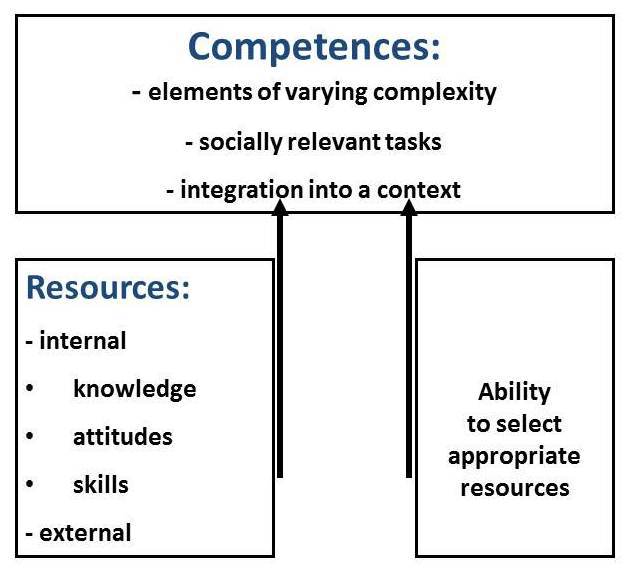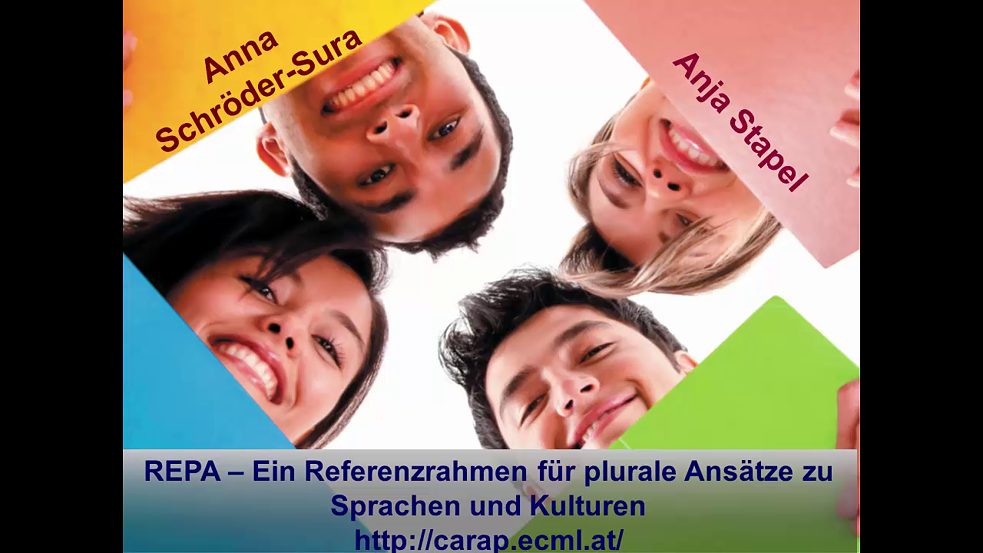“A Framework of Reference for Pluralistic Approaches to Languages and Cultures”
Intercultural competences in teaching and learning

The “Framework of Reference for Pluralistic Approaches to Languages and Cultures” (FREPA) is a tool used to describe intercultural and plurilingual competences, which should also be developed in GFL teaching and learning.
CEFR approaches the competences and experiences of the students in a purely additive way, separately from one another. In this context, encouragement of reflection and language learning competence generally comes off badly. The Framework of Reference for Pluralistic Approaches to Languages and Cultures (FREPA) – which was first published in 2007 by the European Centre for Modern Languages in Graz – aims to fill this gap from its premise of “pluralistic approaches”.
INCORPORATING LINGUISTIC AND CULTURAL DIVERSITY
“Pluralistic approaches” are didactic approaches that use teaching/learning activities involving several varieties of languages and cultures (cf. Candelier et al. 2007, 2012) and are oriented around a universal concept of competence as defined in the CEFR. Here, plurilingual and pluricultural competence is defined as competence “encompassing the full range of the languages available to [an individual]” (Council of Europe 2001: 168). This includes approaches that are more language-oriented in a direct sense, but also “intercultural learning”.With intercultural learning, a lesson unit addresses, reflects on and compares a variety of cultural phenomena with which the student is familiar to a greater or lesser degree. This is not just a matter of communicating cultural knowledge or developing competence to act: the lesson also addresses attitudes, beliefs and values. These might include dimensions such as acceptance, openness, readiness to change cultural perspective, critical questioning, curiosity, reflection, sensitivity etc.
COMPETENCES AND RESOURCES
FREPA defines competence as the result of interaction between the areas of “Knowledge”, “Attitudes” and “Skills” (cf. Weinert 2001). These elements are termed “Resources”, which are described in FREPA as descriptors. FREPA includes a comprehensive list of resources that contribute towards the substantiation of intercultural and plurilingual competences. Competences on the other hand are associated with complex tasks and specific situations.In order to master these complex tasks, the student should have access to individual (internal) resources, and also have the ability to activate these according to the task as well as any external resources. Competence results from the mobilisation of various resources that can be developed during lessons through the use of appropriate materials and tasks.
 © Michel Candelier / European Centre for Modern Languages
© Michel Candelier / European Centre for Modern Languages
INTERCULTURAL COMPETENCES IN FREPA
All the resources in FREPA that relate to cultural aspects are primarily interculturally or pluriculturally oriented and can be found in the “Knowledge”, “Attitudes” and “Skills” areas. Nevertheless they are relevant to several dimensions of intercultural learning. They refer either to general cultural phenomena, comparative aspects of cultures, or to intercultural action.One way in which these dimensions are recorded in the “Knowledge” (K) area is by means of the following descriptors:
Knows that each culture determines / organises at least partly the perception of the world / way of thinking of its members (K8.6), Is familiar with some specificities of one’s own culture in relation to certain social practices or customs from other cultures (K 8.7.2), or also knows that the interpretation that others give to one’s behaviours may be different from that which that same person himself/herself gives to that same behaviours (K 10.5)
In the fields of “Attitudes” (A) and also “Skills” (S), the descriptors refer for example to Being sensitive to the complexity / to the diversity of the relationship which every person has with language(s) / cultures (A16.1). Among other things, they also encompass the skill of Can compare cultural phenomena (cf. S3).
The particular significance of crosslinking languages and cultures is apparent from other descriptors in the areas of “Knowledge” and “Skills”. These refer for instance to Can explain misunderstandings and being able to talk about them (S4.2) or Knows about the role of society in the way that languages work and – vice versa – the role of languages in the way that society works (K 2).
WHO CAN USE FREPA?
FREPA is geared towards several target groups, to which it can also offer a range of tools depending on their needs. It is primarily for textbook writers, stakeholders in the educational field, and curriculum designers, as well as teachers.General principles based on the concept of competence in FREPA can guide the way when it comes to curriculum development. The following should be included
- an integrative approach to languages and cultures, taking into account all linguistic and cultural
- resources to which the learner has access development of strategies to deal with languages and cultures, and of learning competence
- a linguistic and cultural awareness

Literature
Candelier, Michel (Coord.), Camilleri Grima, Antoinette, Castellotti, Véronique, de Pietro, Jean-François, Lőrincz, Ildikó, Meißner, Franz-Joseph, Schröder-Sura, Anna, Noguerol Artur & Muriel Molinié): FREPA - A Framework of Reference for Pluralistic Approaches to Languages and Cultures – Competences and Resources. Council of Europe 2012. (Revised version)
Candelier, Michel (Koord.), Camilleri Grima, Antoinette, Castellotti, Véronique, de Pietro, Jean-François, Lőrincz, Ildikó, Meißner, Franz-Joseph, Schröder-Sura, Anna, Noguerol Artur (Unter Mitarbeit von Muriel Molinié): REPA – Ein Referenzrahmen für plurale Ansätze zu Sprachen und Kulturen. Kompetenzen und Ressourcen. 2007. (Die überarbeitete Fassung erscheint).
Europarat: Gemeinsamer europäischer Referenzrahmen für Sprachen: lernen, lehren, beurteilen. Langenscheidt 2001.
Weinert, Franz E.: „Vergleichende Leistungsmessung in Schulen - eine umstrittene Selbstverständlichkeit.“ In: Weinert, F. E. (Hrsg.): Leistungsmessungen in Schulen. Beltz 2001.